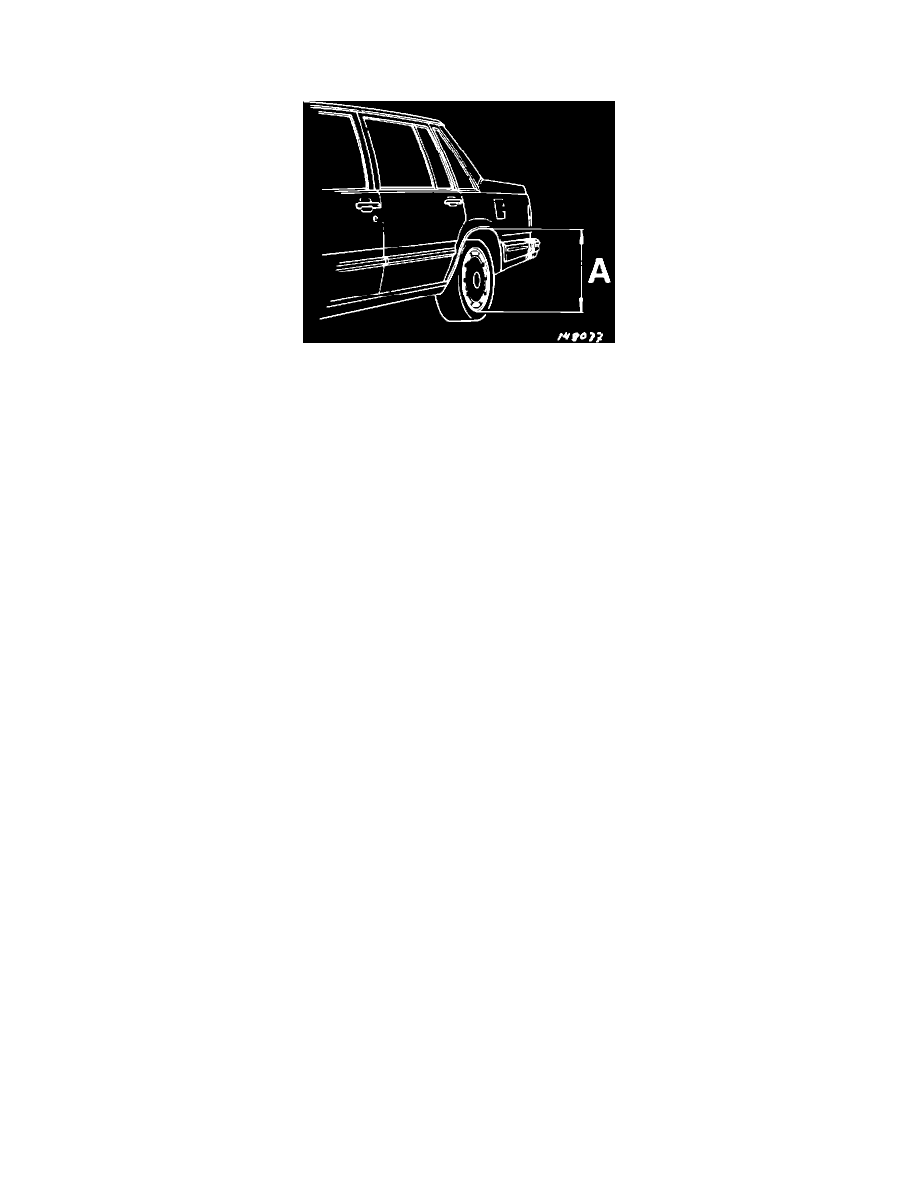780 V6-2849cc 2.8L SOHC B280F (1987)

driving indicates leakage of gas or oil. This means that at least one of the shocks is faulty and should be replaced.
Note:
If only one unit is faulty, then only that unit need be replaced.
On-car inspection of shock absorbers
Check the shock for excessive oil leakage.
Note:
Slight 'sweating' around the pisto rod consist of tiny oil droplets produced by movement of the rod, and does not indicate that the unit is faulty.
Unload all heavy objects which are not part of the standard equipment of the car.
Drive approximately 2km (1.2 miles) to ensure that normal damper level is reached.
Park the car on a flat surface. Measure distance 'A' between the lowest point on the rear wheel rim and the highest point of the wheel arch, on each side
of the car. The difference between measurements must not exceed 15mm (0.6").
Load the luggage compartment with 330 lb (150 kg) of cargo, evenly distributed on both sides. Distance 'A' should now decrease from the extra load.
With the extra weight still aboard, drive the car 2 - 4 km (1.2 - 2.4 miles) on an uneven surface. Then, again measure 'A' on both sides with the car
parked on a flat surface. Distance 'A' should be the same as it was on the unladen car, within a permissible deviation of - 20mm to +8mm. Difference
between left and right sides must still be within 15mm.
Shock absorbers in question must be replaced if the results are outside the limits.
On the next page is an inspection form suggested for use when measuring and checking Nivomat shock absorbers.
